Massimo Attardi is an artist that absolutely uses gum bichromate in a personal and iconoclastical way. The often conformed panorama of alternative and antique print techniques reborn with his work. A classical technique such as the gum one, exploited for decades, has been reinvented and put in service of real expressive exigencies, giving life to Massimo Attardi’s personal and identifying visual world.
It has for sure been a pleasure when Massimo Attardi accepted to be interviewed and let me publish some of his recent photographs on Camera Obscura.
Fabiano Busdraghi: Since the advent of digital photography, analogical photography seems to live a new life and so are alternative and antique techniques. More than characteristics and result, some critical analysis attribute this to the recover of the expressive media low speed, such as for pinhole photography, that counter-balance the frenetic commercial photography, based on milliseconds.
Massimo Attardi: I’m not with this way of thinking, slow speed doesn’t absolutely mean quality.
The expressive media (bichromate gum print for this case) is slow itself, it’s its characteristic and it is not modifiable. If it would be, casually, a rapid technique, with the results we obtain now, would it be less worthy?
Pinhole photography is nothing more than curiosity nowadays. Paolo Gioli is the only who brought pinhole photography to an artistic state… The rest is nothing! Moreover I think that the commercial picture (maybe the camera?) that gain the eighth millisecond fantastically enlarge the creativity.
When we want slow speed… well, there’s always B pose and sometime also T pose. Metal thimble over the lens, microscopic hole… and go!
Fabiano Busdraghi: I’m with you when you talk about slow speed, even if I do appreciate some works of Stephen Eckel, Martha Casanave, Abelardo Morrell (just to cite some artists that work with the hole). I think that technical evolution of photography is at our creativity service, and I’m happy to dispose of all modernity instruments. Actually sometime the characteristic I less enjoy of the alternative technique I practice is their real slow speed!
But let’s go back to the reasons behind your choice to use antique techniques. Some authors underline the uniqueness and unrepeatability of the work. Some other point the accent on the original and personal component in opposition to homologation derived by the use of serial instruments, such as industrial papers. I do not even think this is the problem. I think it is a reworking of the contact with reality, the direct interaction with materials, the sensations on skin, the pleasure of using your own hands to build an image. Which is your principle motivation for using bichromate gum as a printing technique?
Massimo Attardi: About unrepeatability of the work… I don’t know what to say. I’m an artist, and a series of 3/5 identical or similar works is not a big deal, is part of the work. If we want to talk about seriality in contemporary art, well is not so strange, look at Andy Warhol for example.
It depends on why someone does something. If it is an hobby, well let’s make a copy, show it to friends, exchange information with them, spend hours and hours in dark room to experiment, etc… I must say it is thank to people who dedicated their energy to re-discover antique techniques that I started doing my job, so… chapeau.
But… more than this, I think that generally (among those who use alternative techniques) there’s a strong research of the best nuance, of the deepest black, of the most elaborate technique, losing the principle way: the picture itself! I surfed sometime some sites about antique techniques, but I saw mostly banal, almost ugly pictures! Maybe magnificently printed, for sure, but… I think it’s something like the finger and the moon.
There should be a measure in dividing time between taking and printing picture for me (but this is only my opinion).
Sometime a beautiful picture, badly printed, keeps intact its own emotional impact. A bad picture printed gorgeously will not interest to anyone.
In high level photography there’s the printer, whose character and morality, refine an ability and sensitivity in using chemical agents, lights, time and it is thankful for all this. Otherwise the photographer is thankful it can take pictures, less from printing. The collaboration between those two figures is often indispensable to obtain wonderful prints out of beautiful takes.
I think that photographers that approach alternative techniques (except for those who work on them as a hobby) should decide if it is better to spent nights and nights deciding which one is the best print more than taking pictures.
I got to bichromate because I was searching for something… and I didn’t know what. I was mostly searching for a personal manner to create images through a technique that let me free. And actually at the beginning it wasn’t absolutely so.
Bichromate gum, used as in ‘800 did, is quite boring; results, even if beautiful, are always the same. I started in 1990 and after a year of attempts on every kind of surface such as metal, stone, plexiglas, glass (sometime with wonderful results), I found a ductile method to print, that set me free from the classical use of bichromate gum.
I also realized works of 5 (five) meters. I can practically do an infinite number of layers (sometime for an image I made more than twenty) without deteriorating the support.
Fabiano Busdraghi: What you say is actually true, many alternative techniques printers or traditional dark room practitioners, some illustrious names included, hide beside technique spectrum, concealing themselves the expressive emptiness of their images. First time I saw your pictures, I was astonished by the modern, untraditional use of bichromate gum, your intense and strong colors.
Even the support you use is quite particular. More than rigidity, which let you record different layers without deteriorating, is wood as print support choose for an expressive or conceptual exigence? Is the choice due to a research of materiality – gum on wood that recall contact and consistence of skin, the sensation of your model body – or is it a theoretical decision – wood as living, physical material, which has at least an animated past as the images, which were living people before the shooting and wood was once a tree?
Massimo Attardi: No, unfortunately it wasn’t a conceptual choice, rather it was obliged. It is though true that working with wood, cutting it, smelling its perfume is a pleasure. And the casual combination between my images and the support is actually interesting.
Fabiano Busdraghi: Bichromate gum was used by pictorialists at the beginning of the ‘900, mostly because of its huge possibility of interpretation and manual intervention on the image, which elevated print to art work against classical photography as mechanical photocopy of reality. During the successive decades, the artistic affirmation of photographic work took place using the typical expressive middle of straight photography. Then the discussion moved on the conceptual and abstract plan. Nowadays the overview is variegated: return to pictorialism, hybrids between painting, sculpture, video and installations, direct photography, conceptual works, fusion between art world and reportage out of the informational photojournalism schemes… Talking about your images, could we say they are in the middle between pictorialism and direct photography? The pictorial side is brought together by the arbitrary use of colors, the fact that images are constituted by pigments normally used in painting. The photographical side is directed by the aesthetic of the images itself, the violence of the contrasts, the modern and particular use you have for gum, the photographical look. Could you justify your choice in this sense?
Massimo Attardi: The fact that my images have a little of “pictorialism” is something that I’m trying to eliminate as much as I can. I’m not interested in walking a path that goes back. I can’t find any sense in using a technique of the 18th century as it was used. I think that the materials once used can now exalt more and more our creativity, talking about speed, quality, characteristics.
I’m interested into contamination. Taking something from the past to see if it’s possible to turn it over and try to step forward, without great invention obviously, but re-elaborating what comes from the past experiences. With something from me.
I wouldn’t start any polemic, but (with the maximum respect for everyone’s opinion) I think print is not an art work. Print actually penalizes or exalts an art work, which is inside the mind, eye and sensibility of who’s taking pictures.
Full stop.
I can’t even consider myself a photographer, in the sense that the goal of a photographer is a good picture. A good picture is my starting point. Eventually, I can’t consider myself anything but a printer.
I take pictures of bodies because I like it and of course I like women! As I enjoy drinking or smoking. This is fortunately the only justification.
Fabiano Busdraghi: Your pictures often represent feminine nudes. Can you describe what does this choice represent to you?
Massimo Attardi: It represent the pleasure to work with a girl who loved my works.
I generally do not ask girls to pose for me, I’m embarrassed and it could be ambiguous.
So, when a girl wants to pose for me, she’s perfect! No matter the aesthetic.
The undressing point not only has a physical value, when the girl takes her clothes off, but she also takes much more off. The relation is emotional. When I take pictures I never give indications, so the person doesn’t know what to do and often (as many models said) is more embarrassing than when someone guides you. When I shoot, I always let things happen. I’m ok when the model put a sheet on her head, leaving an eye free, or if she lap dances. The extreme embarrass (as the extreme exhibitionism) gives the opportunity of splendid images.
For example, the red girl on black background with hands on her eyes was extremely embarrassed, it was a gesture to hide, not to see me, to break from embarrass.
Fabiano Busdraghi: Have you worked on other subjects in the past?
Massimo Attardi: Yes, for example I worked on a Buto dancer, to create the scenography for a theatre show about Nijinsky.
Fabiano Busdraghi: When you present your works, you do insist on the fact that “there is no retouch interventions, the effect only comes from the overlapping of different colored layers”. Do you say it because of bichromate gum outsiders or is it important for your work? With the advent of digital photography, many artists strongly retouch their images, considering retouch as part of the intrinsic characteristic of modern photography. On the contrary some other photography well-known names, such as Gianni Berengo Gardin just to mention one, consider retouching a non-photographical and digital practice that causes a qualitative flatten of the photography. Often this ends into a battle between those who believe photography is the representation of “reality” and those who think photography is an interpretation and deformation of reality, and everything – even manual intervention – is allowed. I find “the battle” sterile and useless, but the position can be interesting.
Massimo Attardi: If we define reality as complex of actions happening around us in a certain moment, well when we point with our camera we do have a spatial limit and when we shoot, we fix an instant that it wasn’t and it won’t be. Therefore, if we want to define photography we should say that, what we see in a picture, is not reality, but rather a part (the one focused) of that instant reality.
It is anyway a good word game. I don’t think a position is to be taken, as both way of thinking produced wonderful works.
I think that my pictures are “my” version of reality, I couldn’t see it differently, I should be worried if it wasn’t so.
Fabiano Busdraghi: Ok, you find me absolutely with you. The produced images are important. Bichromate gum can be used to obtain pictorial effects or to have a direct photographic look. Your images, seen the choice of colors and your way of using gum, are partially photorealistic. Then why do you often underline they do not come from a retouch?
Massimo Attardi: One thing should be specified when printing pictures on paper. Sometime a zone is masked or burned, when developing. A zone is scratched to take the best out from a detail, then it is scored when dry. May we call them retouches? I don’t know, but I do similar interventions.
When I specify that my works are not retouched, I’m not saying that any intervention has been taken, but that if any intervention has been taken, it didn’t substantially modified the work.
This is the right statement for those who approach the work; it is correct that they know the nature of the work itself.
Sometime people look at my works and they do not understand if it is painting, a printed picture sticked on a wood tablet (and if I don’t say it, they do not even notice that it is printed on wood). Once they learned this, I’m always asked if I paint on my pictures and my answer is that “it is a real picture, there’s no painting or other kind of intervention”. Clearly an insider of bichromate gum doesn’t need any explanation, therefore all my assertions are not directed to those familiar with bichromate gum prints, but to all those (many) people who doesn’t know it.
Keeping in mind that I’m not contrary to, even strong, interventions on images and that I could intervene myself on pictures one day.
Then, when I shoot, print, choose colors I force the real nature of the image, therefore, for sure! it is my personal interpretation or twisting (that is modification following my sensitivity and taste) of an event I captured with my own camera.
Fabiano Busdraghi: Which book are you reading? What music are you listening to? In your work, you mix photography and painting. Have you ever found contact points between photography and literature or picture and music? Are your inspirations only visual?
Massimo Attardi: I’m reading “No logo” by Naomi Klain. I listen to Mozart, Colle der Fomento, America, Metallica, Fiona Apple, Buscaglione, the good old Sepultura, Glenn Gould, l’immancabile Charlie (Parker), etc.
There are several contact points, but they are unconscious. Music touches everything, how could anyone live and work without it?
Fabiano Busdraghi: Your works spread through the classical ways of diffusion – galleries, expositions, papers publications and so on – or is it related to the new artistic circuits that are starting on the net? What do you think about those kind of initiatives?
Massimo Attardi: Contemporary art galleries, auction houses, collectors. I don’t know what to say about the Internet, I’m not an addicted.
Fabiano Busdraghi: Could you tell the name of a photographer that uses alternative or antique techniques you do like? Which are the authors, not necessarily photographers, that influenced your growth?
Massimo Attardi: A photographer? One of the fewest is Jean Janssis. He takes wonderful pictures, they would be great even if printed with a plotter, it is more than bichromate gum.
Who influenced me? Peter Hšeg, Bukowski, Asimov and many others. I’m not the kind of person that divides humanistic, scientific and photographic knowledge from my job. Every type of knowledge modify myself and bring me to different choices and sensibilities.
Fabiano Busdraghi: A little technical question: does the use of materials different from paper as print support need particular attentions? How do you prepare wood before setting down the bichromate gum emulsion?
Massimo Attardi: First of all I make a first layer of enamel. Then I follow the normal procedure. I prepare the mixture with 350g of arabic gum in a liter of water and put 50g of bichromate in another liter. I use a tanning lamp, stole from my sisters year ago, for the exposition, with 5 fluorescent tubes that produce 30 cm ultraviolet rays. The lamp is one meter from the working table and the exposition goes from 1 up to 5 minutes for each table angle (the cone of light is not enough to uniformly enlighten a big table). Developing phase in water for 4/5 minutes up to an hour. Reds require more time than blues and blacks.
Fabiano Busdraghi: What you’re working on in this moment? How different is it from your past works? Do you have any future project you haven’t started yet?
Massimo Attardi: I’m taking pictures of urban views, it is a project I’ve been developing for a while.
I started painting and playing piano.
Future plan? Move to Berlin.
Massimo Attardi at work
A new, clearer and more precise video is available with the interview New bichromate gums by Massimo Attardi.
Short biography of Massimo Attardi
Massimo Attardi was born in Treviso. He started working as a photographer in a dance company and successively in mode. He was attending the university of Political Sciences when he moved to Rome, where he got in touch with the artistic environment. In 1990 he started a personal research about the human figure and the antique print techniques, particularly on gums, using different supports such as wood, metal, glass, plexiglas, stone. After few time, the Laboratory Museum of Contemporary Arts in Rome exposed his works, which followed a series of personal and collective exhibitions.
Massimo Attardi lives and works in Rome, Via degli Ausoni n. 3, inside the ex bakery Cerere. His e-mail address is [email protected] while his website, actually under construction, is www.massimoattardi.com.


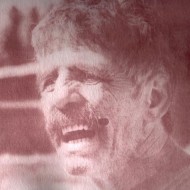
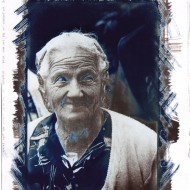
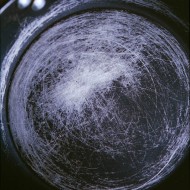
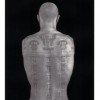
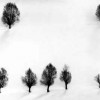





























Sono stupito dai tuoi quadri sono molto belli e come tu li realizzi.
You can also subscribe to this post comments RSS feed.